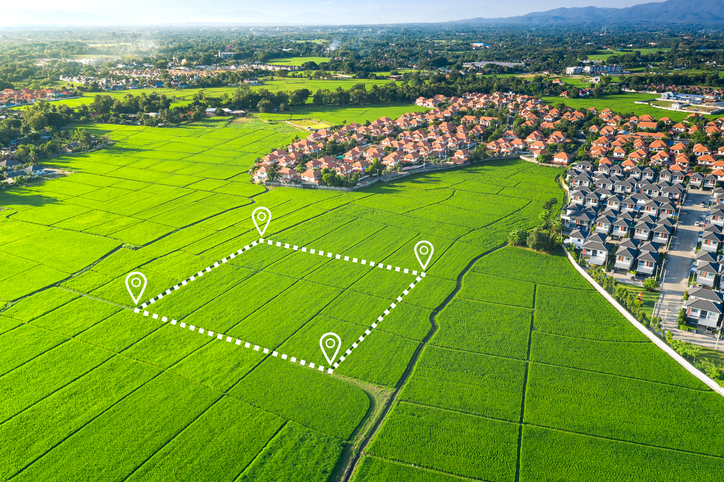Kelsie Essenhigh, Legal Director in FSP’s Agriculture and Rural Land team considers what you should look for on a sale of part of agricultural land.
It is important to understand early on in the selling process that disposing of part of a farm or an agricultural holding carries with it a different set of considerations to a sale of the whole of the holding. Landowners will usually rely on their land agent or surveyor to negotiate heads of terms, but these do not always cover much in the way of detail on the legal division of the land, preserving and granting rights and how to deal with any agri-environmental schemes.
What should you be considering?
Is my land registered?
If the land is registered, ownership can be established immediately. Dealing with unregistered land can cause delays. You might consider making an application to register the land before you sell, although you will need to factor in the costs associated with that and the fact that a first registration application might take several months to be completed at the Land Registry. It is a good way of ensuring that the title position is clear and also will show up any gaps, issues or defects, which can addressed ahead of time.
Is there a mortgage?
If the farm is subject to a mortgage, then you should approach your lender to establish whether they are prepared to release the relevant part of the land from their security or, alternatively, how much will need to be repaid in order to obtain a release of the charge over that part of the property.
Valuation advice
Your land agent or surveyor will normally have considered this issue before you market part of your farm, but it is worth bearing in mind that a sale of part can impact on the value of your retained property.
Tax implications
You should consider whether there are any tax implications on the sale, such as VAT or Capital Gains Tax, and also whether any reliefs are available.
What about future development value?
Is there a possibility that a valuable planning consent could be obtained for non-agricultural use? If so, it is advisable to take professional advice as to whether it would be appropriate to include overage i.e. an ability to ‘claw back’ future development value.
Good quality plans
Ensuring that you have sufficiently detailed Land Registry compliant plans is a key part of the sale process. The plans will need to show the land that is being transferred, but might also show:
- the retained land
- accessways and access points
- septic tanks
- responsibility for boundaries
- other features such as streams, ponds, paths etc.
It is often the case that the process of agreeing the plan will trigger discussions about rights that need to be granted to the buyer or retained by you as the seller. Having the plan ready early on also means that a buyer will be able to get on with their search applications, speeding up the sale process.
Rights or easements that need to be granted and reserved
Easements can be implied or expressly granted. Implied easements such as those anticipated by section 62 of the Law of Property Act 1925, are often expressly excluded in transfers of part of land. This means that the parties should consider the express grant/reservation of easements in the transfer.
Each sale is different to the last, but in general terms, you might need to consider the following easements when selling agricultural land:
Access
- Vehicle (and pedestrian) access to the land that is being sold, and indeed the land that is being retained;
- Restrictions on size, weight or type of vehicle using the access;
- Limitations on the times and the nature of the use;
- Where there is a shared access: rights to alter the route of the right of way and who is responsible for maintaining and paying for repairs to the access;
- General access for maintenance of boundaries/buildings.
Services
- Rights to use the services that supply the land that is being sold (water, drainage, energy, telecoms, where those services, pipes, cables are not wholly within the land that is being sold (and likewise for services that will continue to be required by the land that you are retaining);
- Rights to repair the existing services and lay new services in the future;
- Restrictions on the use of services.
Sporting Rights.
Restrictions on use/Covenants
Once you have considered the rights that might be required, you might then also look at what covenants or restrictions (which could be positive or restrictive) need to be imposed. A positive covenant is one that imposes an obligation in relation to land or requires expenditure of money and a restrictive covenant is one which limits or prohibits certain uses. Covenants could include:
- restrictions on the use of land, e.g. prohibiting building on the land;
- requiring the buyer to contribute towards shared costs.
Who is in occupation?
If the land that you are selling is vacant then this simplifies the process but if the land is subject to third party rights, whether those are on an informal or formal basis, then you need to consider the rights of that occupier and whether to regularise or terminate the arrangements before you sell.
Agri-Environmental Schemes
A buyer will want to understand at the earliest opportunity details of any environmental schemes, any basic payment scheme entitlements, other capital grant schemes and whether there are any agricultural designations applicable to the property. Each scheme will have its own conditions as to termination or transfer, which can be more complex in the case of a sale of part of the land in the scheme. We can assist you in identifying and considering these and, as necessary, introduce to other professionals who have expertise in this area.
What if you have more questions?
The key to a straightforward sale is early planning and getting a good team of professionals to work with. If you want to discuss your sale or any other issues raised by this article, please do get in touch.

